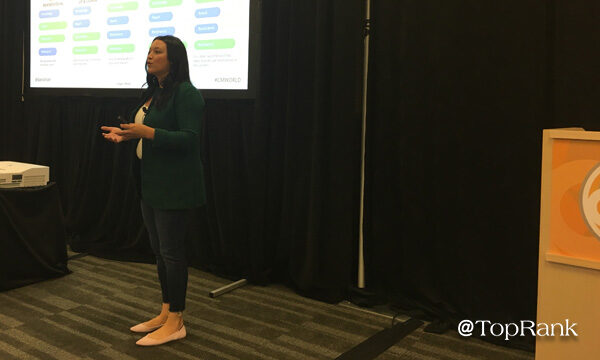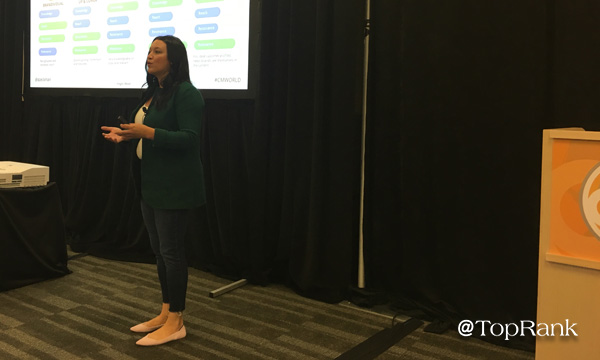
B2B content marketers have faced many epic foes over the last few years. There’s the nefarious Content Shock, the demoralizing Facebook Algorithm, and the destructive Google Search Update. We have battled them all and continued to thrive.
But now we face our most fearsome foe: The Dreaded Trust Gap.
Less than half of consumers trust brands. Seventy-one percent of buyers are turned off by overly sales-y content. Buyers increasingly prefer content from industry influencers rather than brands.
It’s a daunting problem that needs a bold solution: The Guardians of Content!
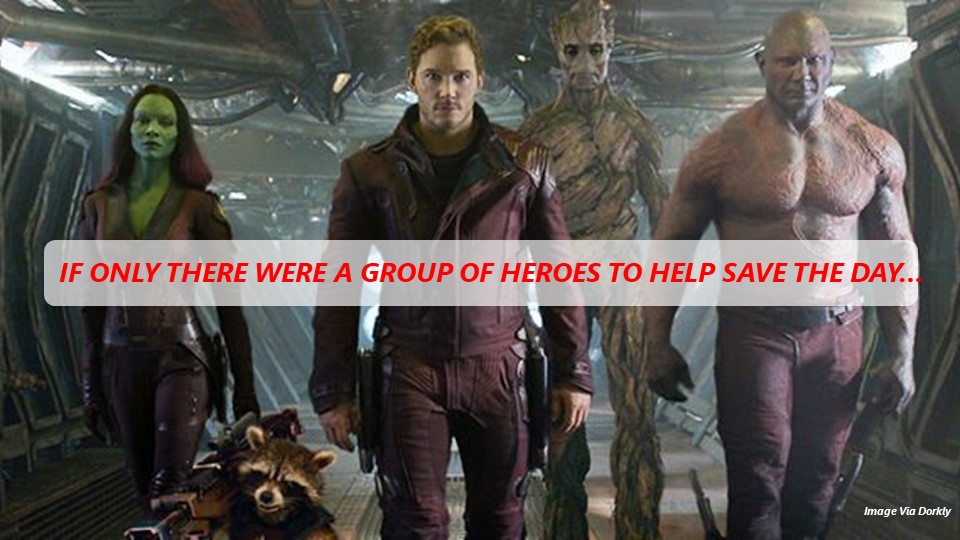
In her Content Marketing World 2019 presentation, our very own Director of Digital Strategy Ashley Zeckman explained how B2B content marketers can initiate and scale up a heroic influencer content program of their own. Here are a few key takeaways.
Three Common B2B Influncer Pitfalls
If you’re just getting started with B2B influencer marketing, there are easy mistakes to make. Most of them come from trying to emulate the B2C model: Transactional, glorified sponsorship rather than content co-creation. Here are Ashley’s three most common pitfalls and how to avoid them:
#1: A Disconnected Approach
Say you have a hole in your editorial calendar, so you ask an influencer for an interview. Then you need some quotes for an infographic, so you ask a few others for a nugget of wisdom. Then you reach out on social media to a couple of folks you admire. Then you ask a different set of influencers for quotes for an eBook…
You get the picture. Instead of a strategic campaign that can build into something bigger, you have a ton of one-offs. It’s inefficient. It’s inconsistent for your audience and for the influencers you’re courting.
Instead, Ashley says, aim for a strategic, connected approach. Plan in advance which topics you’re covering, which influencers you want to include, how you’ll use the content, and your plans for repurposing.
#2: Transactional Relationships
There are two ways that influencer relationships can get too transactional. The first is asking too much too quickly, while offering nothing of value in return. Imagine you got an email from a stranger asking you to help them move. Would you do it?
Now imagine an email from a friend asking for that help, and promising pizza and beer? Relationships matter. Take time to honor your influencers, follow them on social media, promote them and their work. Help them succeed, then start with a small ask, like a sound bite for a blog post.
The second way relationships can be too transactional is more literal. If you only work with paid influencers who promote content you wrote… well, that’s more endorsement than influencer content, and it can be less likely to find an enthusiastic audience.
While you may financially compensate some influencers, Ashley says, the emphasis should always be on content co-creation. You want influencers to feel ownership of the finished product – they’ll be much more likely to promote something they’re excited to have made.
#3: Lack of Measurement
Like any other marketing tactic, influencer marketing should be able to prove its worth. Many marketers fail to build in measurement at the beginning, and end up with nothing but vanity metrics to show.
It’s important to plan for measurement before you start. Lay the groundwork for the KPIs you plan to meet, and the metrics you’ll use to show progress. And don’t forget to set benchmarks!
Here are a few of Ashley’s sample KPIs:
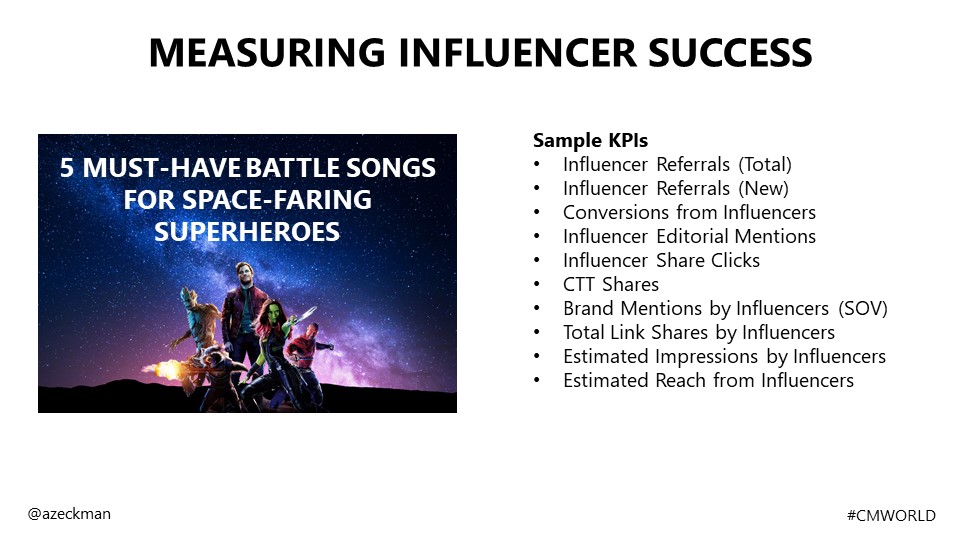
Planning Content and Assembling Your Heroes
Keeping those pitfalls in mind, here’s how Ashley recommends designing and implementing an influencer program.
First, determine your topical focus. The topics you plan to cover should hit the intersection of your business priorities, search demand, and influencer expertise. It shouldn’t be too tied to your products and solutions. Think more about what you want your brand to be known for.
Use the same tools you use for content research to find the key terms where there is audience demand and competitor whitespace as well.
With topics in hand, you can start identifying your influencer mix:
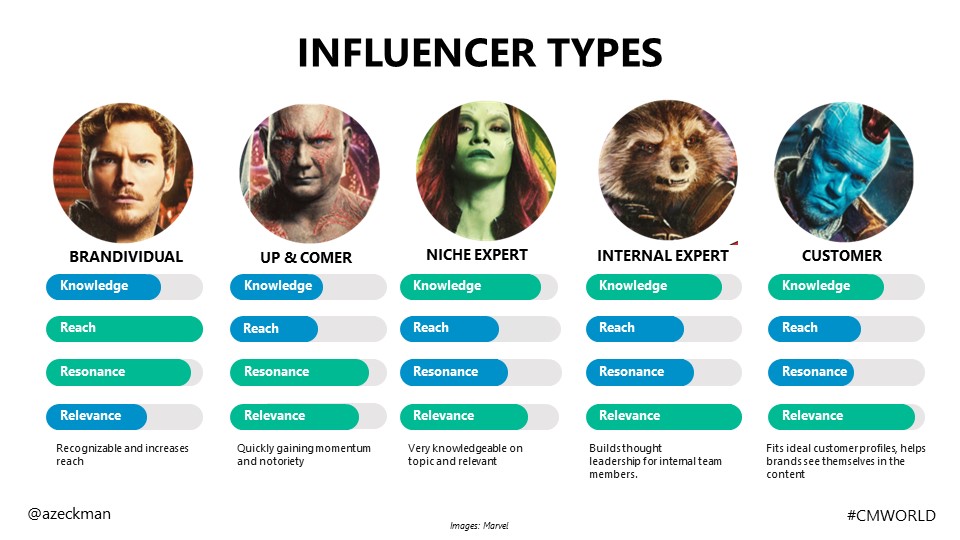
You’re not looking for just the people with the largest audience. Instead, focus on people who are respected in their fields, shared interest in your topics, and the ability to actually move people to engage.
It’s also important, says Ashley, to find influencers who fit your content type. If it’s an audio or video asset, look for folks who have demonstrated a willingness an ability to provide that type of content. Beyond that, influencers should be reputable, practical, with real-life experience to draw from.
When you reach out to these influencers, remember to give before you ask:
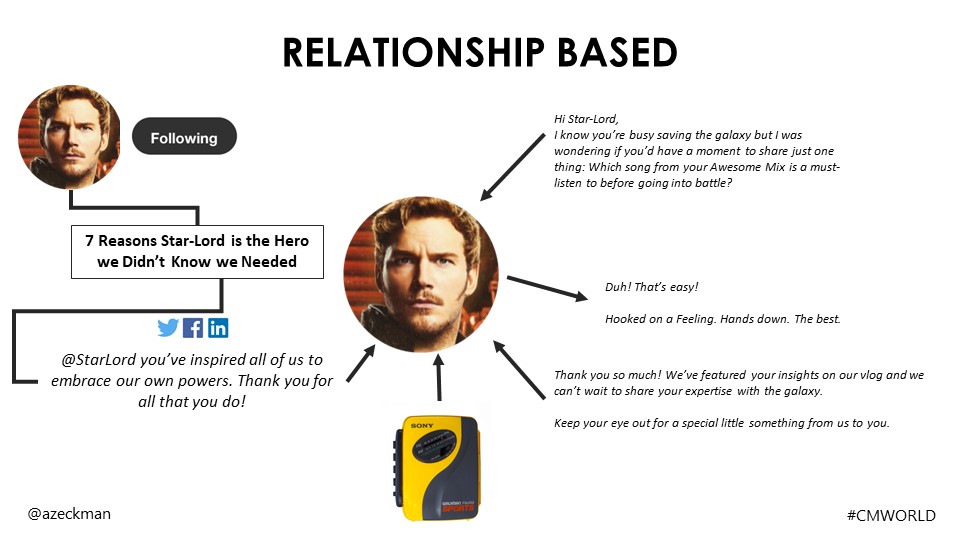
The nurturing process helps prove your own credibility to influencers, showing you’re a trustworthy partner, and hopefully sparking interest in co-creating awesome content.
The Adventure Continues (and Continues, and Continues)
The ultimate goal of your influencer outreach and nurturing should be a connected universe of content (much like Marvel’s cinematic universe). Who would assemble a hero team and disband them after one adventure? Continue nurturing relationships with your influencers and encourage them to acknowledge and support each other, too. The goal is to develop a community of folks who are always up for another mission to save the world from boring B2B content.
Ready for a heroic influencer marketing success story? See how Alcatel-Lucent drove 6-figure leads with their campaign. Looking for more insights out of CMWorld 2019? Check out these other posts featuring several of this year’s speakers:
- Create a Stellar Content Experience by Slowing Down with These Tips from Ann Handley #CMWorld
- April Henderson on Data-Driven, Empathetic B2B Content #CMWorld
- Zari Venhaus’s Framework for Gaining Executive Buy-In for Marketing Technology #CMWorld
- Lee Odden Shares His Secret to Content Marketing Fitness #CMWorld
- Carlos Abler Details How Content Marketing Can Contribute to the Greater Good #CMWorld
- 50 Content Marketing Influencers and Experts to Follow 2019 #CMWorld
